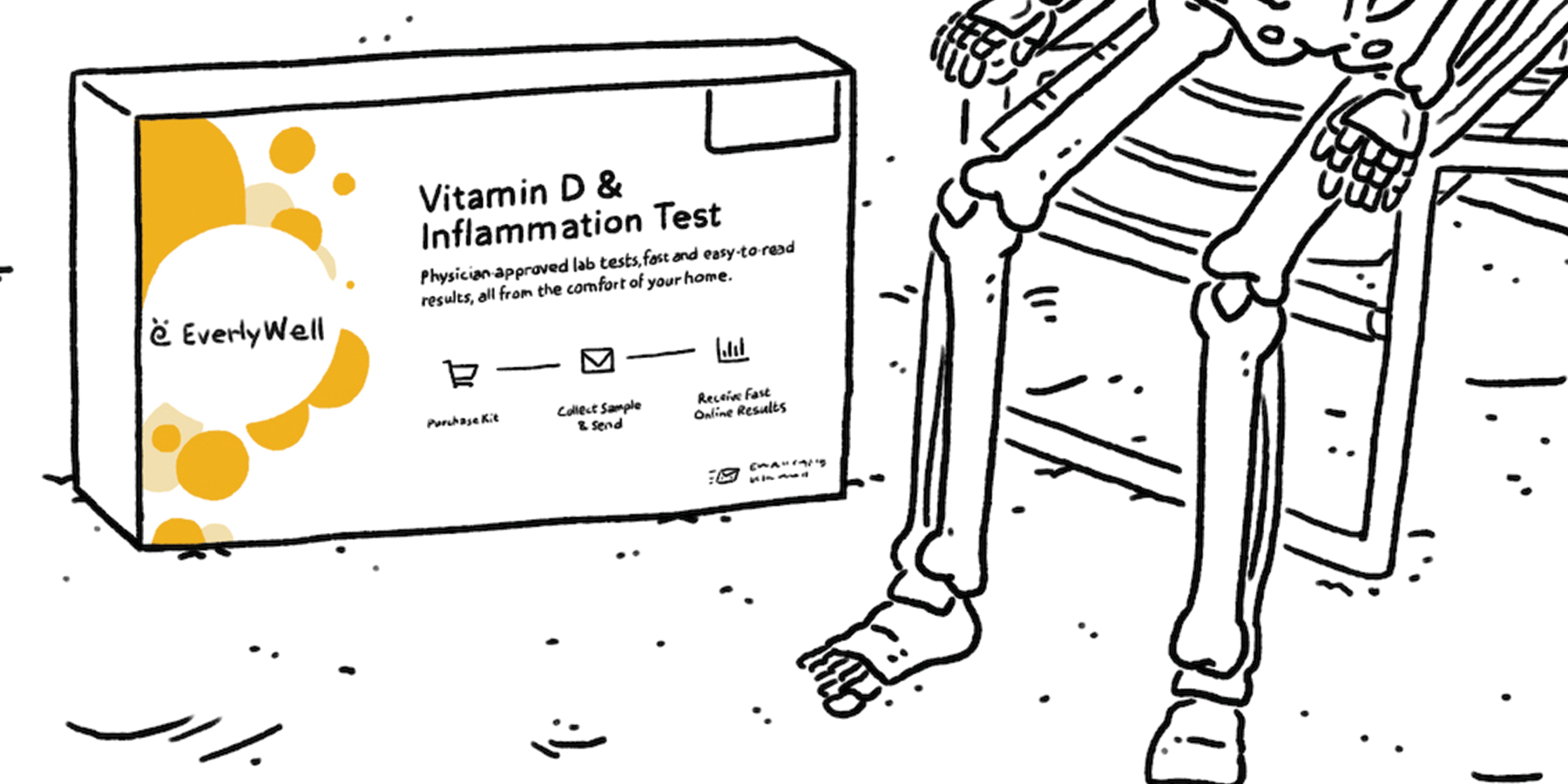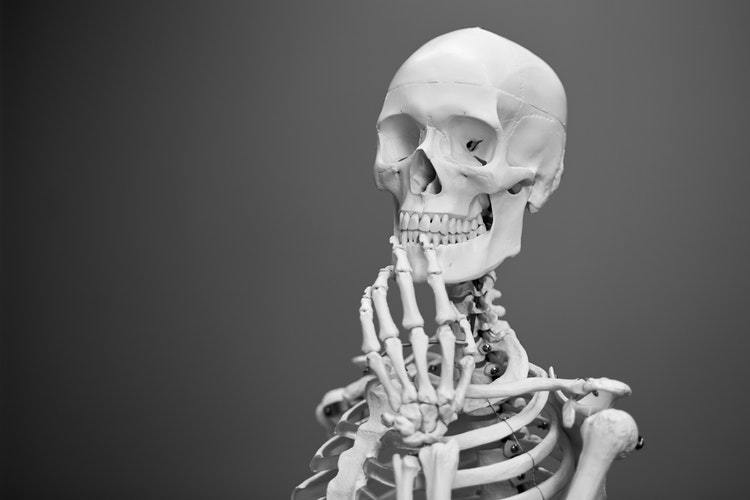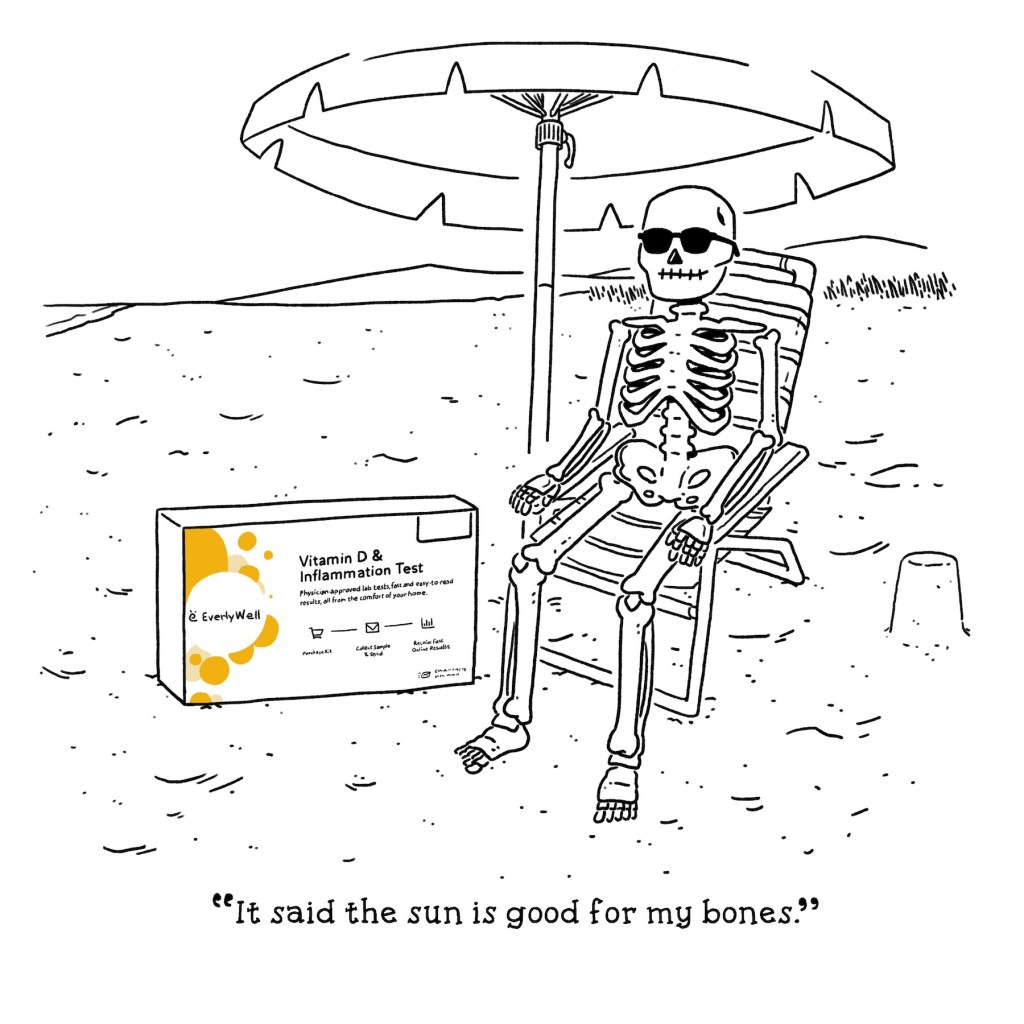
Halloween Is A “Spooktacular” Time To Think About Your Skeletal Health – Here’s Why
With Halloween rapidly approaching, now’s the perfect time to start thinking about your skeletal health – even if you aren’t the legendary pumpkin king Jack Skellington. Here’s the spooky reason lurking behind that idea: the onset of the cooler, wintry days that follow Halloween can directly affect your skeletal system’s well-being.
 The onset of the cooler, wintry days that follow Halloween can directly affect your skeletal system’s well-being.
The onset of the cooler, wintry days that follow Halloween can directly affect your skeletal system’s well-being.
But why is that the case? The answer to that question lies in the connection between sunlight and a vital vitamin that’s known as vitamin D (and popularly dubbed “the sunshine vitamin”). Lower amounts of sunlight can decrease vitamin D levels – which can be measured with an at-home test like the Everlywell Vitamin D Test – and thus disrupt the health of some of the body’s critical systems (especially the skeletal system, as you’ll discover below).
VITAMIN D: THE “SUNSHINE VITAMIN”
If you want more vitamin C, you can down a glass of orange juice. And if you need more vitamin A – well, munching on carrots will do the trick.
Vitamin D is a little different, though: it’s rarely found in natural sources of food (which is why many people choose to supplement with vitamin D gummies or capsules). But not to worry: the food you eat isn’t the only way to get vitamin D, since the sunlight that lands on your skin – or, more specifically, the sun’s UVB rays – is the #1 way your body produces ample amounts of vitamin D.
 The sunlight that lands on your skin is the #1 way your body produces ample amounts of vitamin D.
The sunlight that lands on your skin is the #1 way your body produces ample amounts of vitamin D.
So, unlike many other vitamins, vitamin D levels can be increased just by spending time outdoors in the sun. (Indoor lighting, on the other hand, doesn’t stimulate production of vitamin D because such light emits very little, if any, UVB radiation.)
VITAMIN D AND SKELETAL HEALTH
As alluded to above, vitamin D is of major importance to your body’s well-being. In fact, the vast majority of your cells have vitamin D receptors – which means that vitamin D can exert an effect on practically all of your body’s tissues.
Vitamin D seems to be particularly essential for the health of your skeletal system. For example, children who are vitamin D deficient may face nightmarish disorders like rickets – a condition in which the body’s bones soften and deform. And the potential ramifications of vitamin D deficiency is no less chilling for adults: much-too-low vitamin D levels can contribute to weak and brittle bones – or “osteoporosis” in the physician’s parlance. There’s also a much higher chance of bone fractures if your levels of the “sunshine vitamin” aren’t high enough.
 Vitamin D seems to be particularly essential for the health of your skeletal system.
Vitamin D seems to be particularly essential for the health of your skeletal system.
Nor are these the only skeletal horrors associated with vitamin D deficiency: for instance, vitamin D deficiency can cause something that’s ominously referred to as “bone mineralization defect” (it’s also called “osteomalacia”).
Suffice it to say that bone mineralization defect is every bit as scary as it sounds. Why? In short, bone mineralization defect is a condition in which your skeletal system doesn’t have the minerals it needs to build strong, sturdy bone structures. If and when that happens, you may experience painful aches in your joints.
That’s bad enough in itself, but worse still, a bone mineralization defect can be as elusive as a ghostly spirit in a haunted house: it’s often misdiagnosed for completely different conditions – like fibromyalgia, dysthymia, arthritis, chronic fatigue syndrome, and more, which makes it difficult to treat.
SO WHY IS HALLOWEEN A GREAT TIME TO START THINKING ABOUT YOUR SKELETAL HEALTH?
Aside from a fantastic array of costumes – both like-worthy and wince-worthy and everything in between – Halloween also tends to come with an onslaught of wintry weather ahead. And wintry days, in turn, reduce the amount of sunlight that strikes your skin. That’s true, in fact, whether or not snow-stuffed clouds fill the sky and block out sunlight. On a perfectly clear day in the winter, the sunlight that reaches the Earth’s surface isn’t as concentrated as the sunlight on a summer day. This is because the Earth is tilted on its rotational axis.
Thus, during the winter, not as many UVB photons land on your skin – so, as a result, your body produces much less vitamin D. Additionally, chances are you wear more layers of clothing throughout the winter – which exposes less of your skin to the solar rays that do make it to the Earth.
 During the winter, not as many of the sun’s UVB photons land on your skin – so, as a result, your body produces much less vitamin D.
During the winter, not as many of the sun’s UVB photons land on your skin – so, as a result, your body produces much less vitamin D.
For these reasons, vitamin D deficiency is usually much more common in winter than in the summer. This conclusion intuitively makes sense given the connection between sunlight and vitamin D synthesis, but it’s also backed up by lots of scientific research. Indeed, some research suggests that – on a global scale – vitamin D deficiency is present in more than 50% of the world’s population during the winter.
So, this Halloween – with winter just around the corner – give some thought to your skeleton by checking if you’re “haunted” by low levels of vitamin D. If you’re not sure if you’ve soaked up enough of the sun’s rays this past summer to protect your bone health through the winter, you can easily – and conveniently – measure your vitamin D levels at home with the Everlywell Vitamin D Test.
 This Halloween – with winter just around the corner – give some thought to your skeleton by checking if you’re “haunted” by low levels of vitamin D.
This Halloween – with winter just around the corner – give some thought to your skeleton by checking if you’re “haunted” by low levels of vitamin D.